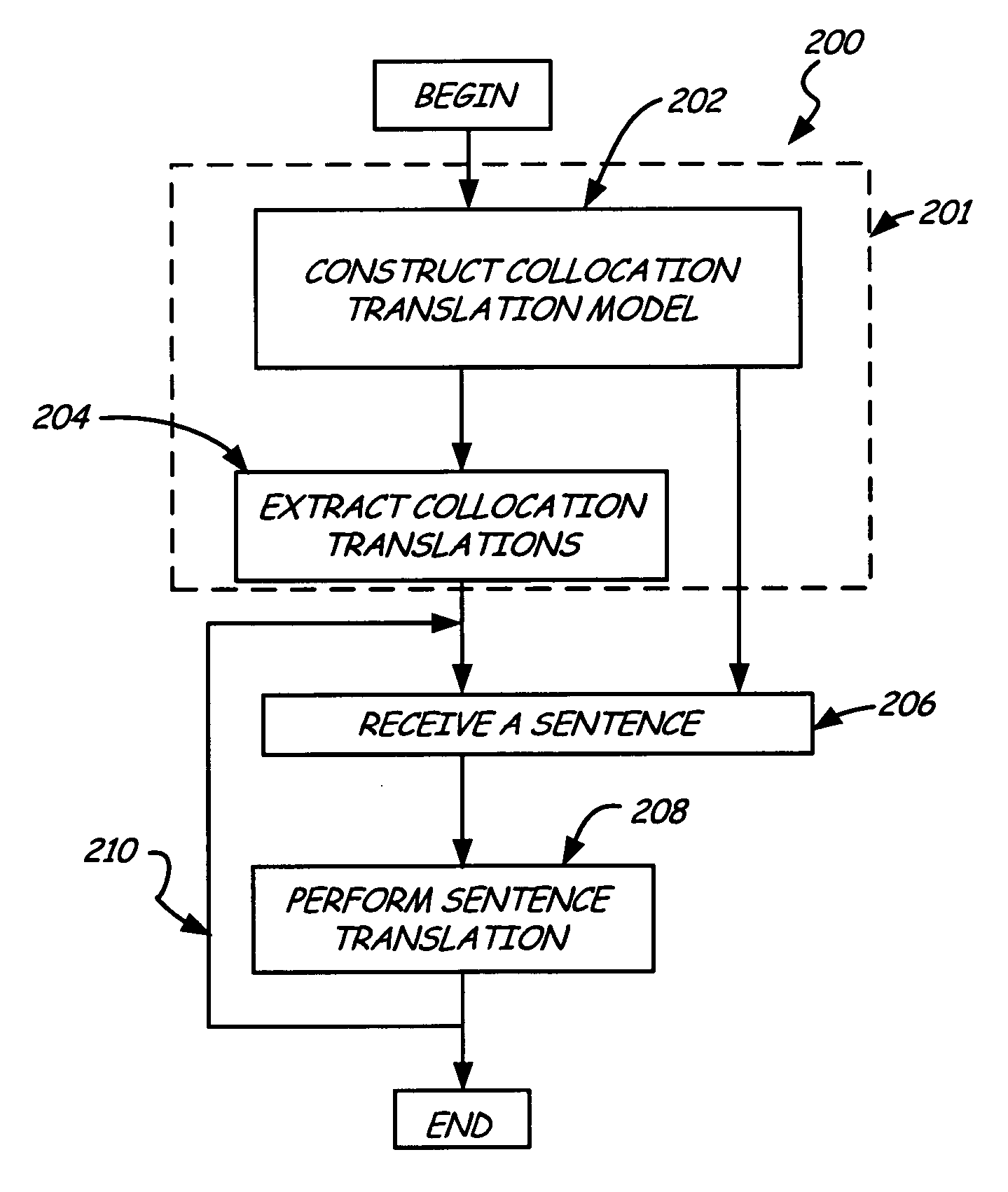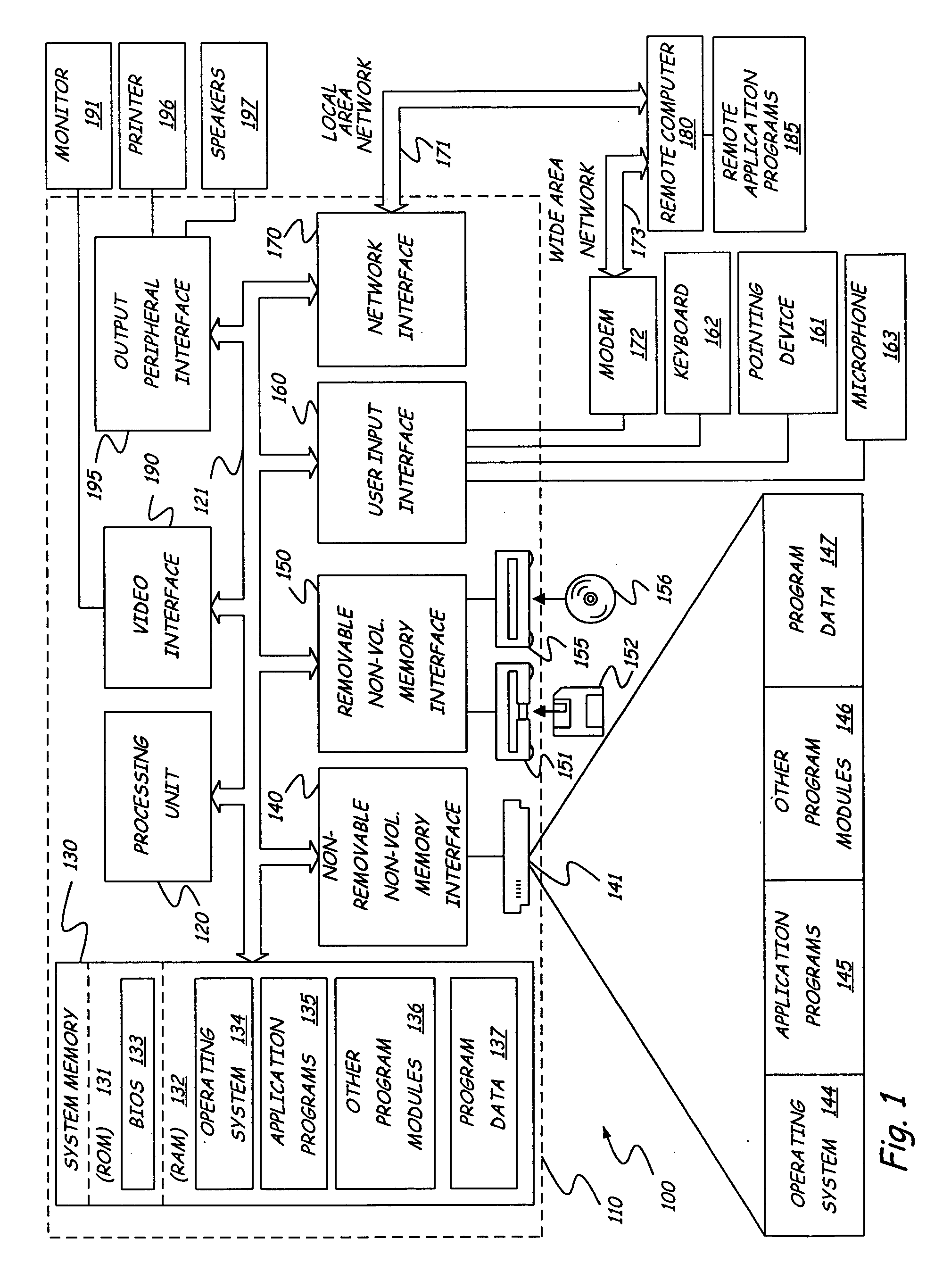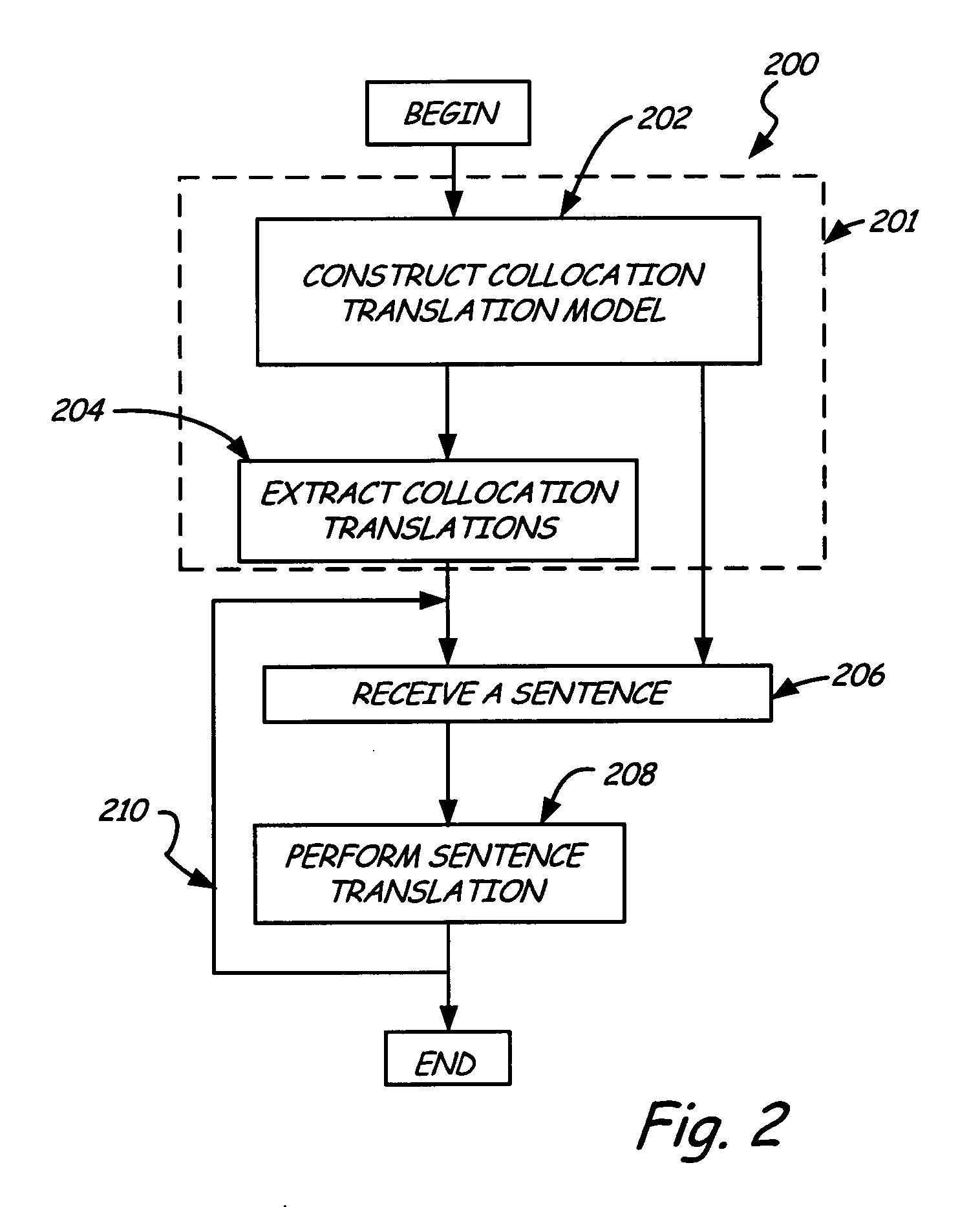Collocation translation from monolingual and available bilingual corpora
a monolingual and bilingual corpora technology, applied in the field of natural language processing, can solve the problems of large aligned bilingual corpora that are difficult to obtain and expensive to construct, and the method has generally not included using bilingual corpora
- Summary
- Abstract
- Description
- Claims
- Application Information
AI Technical Summary
Problems solved by technology
Method used
Image
Examples
Embodiment Construction
[0020] Automatic collocation translation is an important technique for natural language processing, including machine translation and cross-language information retrieval.
[0021] One aspect of the present invention provides for augmenting a lexical knowledge base with probability information useful in translating collocations. In anther aspect, the present invention includes extracting collocation translations using the stored probability information to further augment the lexical knowledge base. In another aspect, the obtained lexical probability information and the extracted collocation translations are used later for sentence translation.
[0022] Before addressing further aspects of the present invention, it may be helpful to describe generally computing devices that can be used for practicing the invention. FIG. 1 illustrates an example of a suitable computing system environment 100 on which the invention may be implemented. The computing system environment 100 is only one exampl...
PUM
 Login to View More
Login to View More Abstract
Description
Claims
Application Information
 Login to View More
Login to View More - R&D
- Intellectual Property
- Life Sciences
- Materials
- Tech Scout
- Unparalleled Data Quality
- Higher Quality Content
- 60% Fewer Hallucinations
Browse by: Latest US Patents, China's latest patents, Technical Efficacy Thesaurus, Application Domain, Technology Topic, Popular Technical Reports.
© 2025 PatSnap. All rights reserved.Legal|Privacy policy|Modern Slavery Act Transparency Statement|Sitemap|About US| Contact US: help@patsnap.com



